Dear friends, this blog post was never meant to be taken in all seriousness. I was feeling kooky at the time. If it sounds too bizarre to be true, don't believe it ;-)
Last Wednesday I headed back out to check on the Wallcreeper nest. This time I was a little bit more prepared. I had a full HD videoscoping setup (Swaro ATM80HD, 25-50xWide eyepiece, UCA digiscoping adapter, Pana SD100 HD camcorder) and a digiscoping rig (Swaro STM80HD, TLS800 digiscoping adapter, Canon EOS 350D). So I lugged all this stuff up the gorge with me, along with a local university student (Silvia Pramstaller) who is also very keen on birds.
It is often very difficult to get decent shutter speeds in such tight, dark gorges, but I did manage to get some decent digiscoped photos of the wallcreepers that I am rather happy with. Even better than the photography, was just the opportunity to be able to spend so much time with such a unique and enigmatic bird. Alpine birdwatching at its finest!
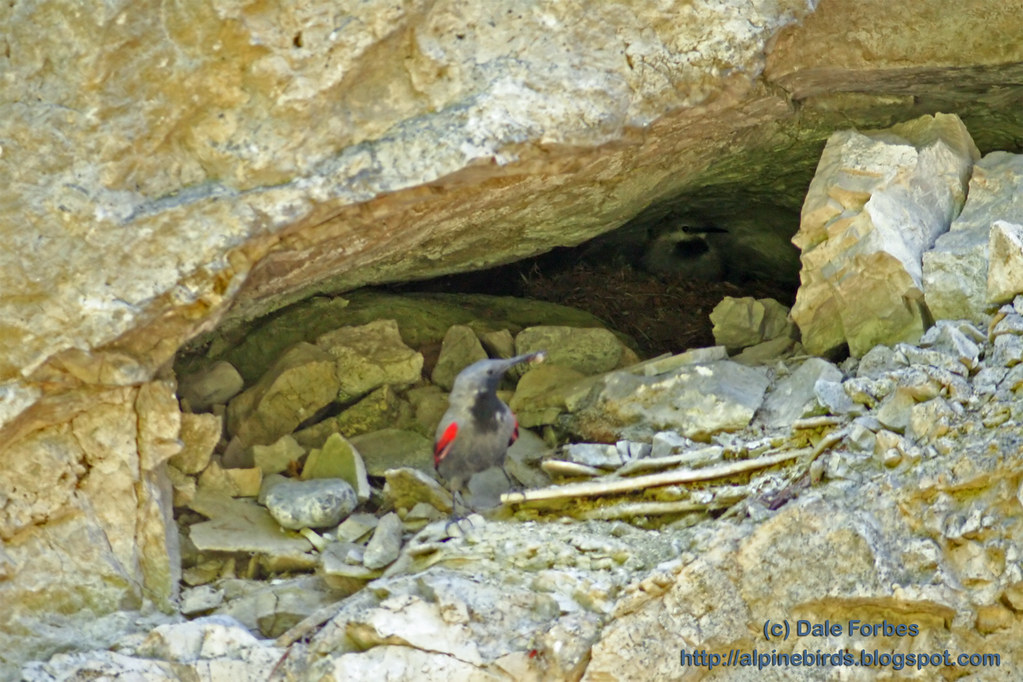 Female Wallcreeper (Tichodroma muraria, Mauerläufer) on nest with at least four (maybe five) chicks in nest. Male wallcreeper is in the foreground at the nest tunnel entrance.
Female Wallcreeper (Tichodroma muraria, Mauerläufer) on nest with at least four (maybe five) chicks in nest. Male wallcreeper is in the foreground at the nest tunnel entrance.A little known fact is that wallcreepers excavate their own cavities in the rock face. The male and female scrutinize the cliffs of an appropriate gorge - some times for years - searching for an appropriate crack in the rock face with just the right chemical, geological and geographical elements. After having selected a site, they begin with the hard work of clearing out a nest. In much the same way as the bee-eaters of the old world, and jacomars of the new world, these surprisingly robust little creatures hammer away at the chosen crevice one grain of rock at a time. This lengthy process can take a pair up to seven years to complet, but once finished, they can rest assured that their home bears all the hallmarks of great German engineering, Swiss precision and an Austrian's obsession with quality and "doing things the right way".
In the final photo, you can clearly see where the birds have scraped and scoured away at the roof of the nest cavity to create just the perfect dome shape. A cunning mixture of various locally-available clays, lichens and a specific ant species make for a perfect [mildly explosive] mixture that helps to quickly enlargen the entrance and the small stones littering the entrance have been carried in specifically for that function. The larger boulder guarding the right entrance to the nest must have taking them months to carry in. Incredibly industrious little birds are these Wallcreepers.
Happy birding
Dale Forbes
p.s. I did make a little video of the wallcreepers in action around the nest but my internet connection is upset with me today so I will have to post it another day.


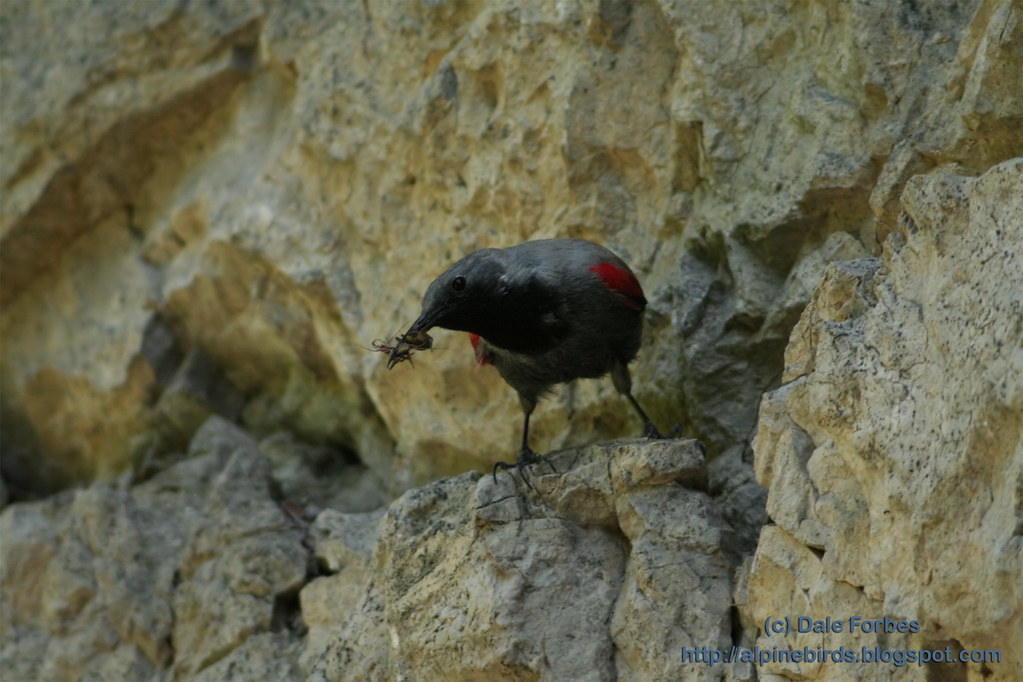
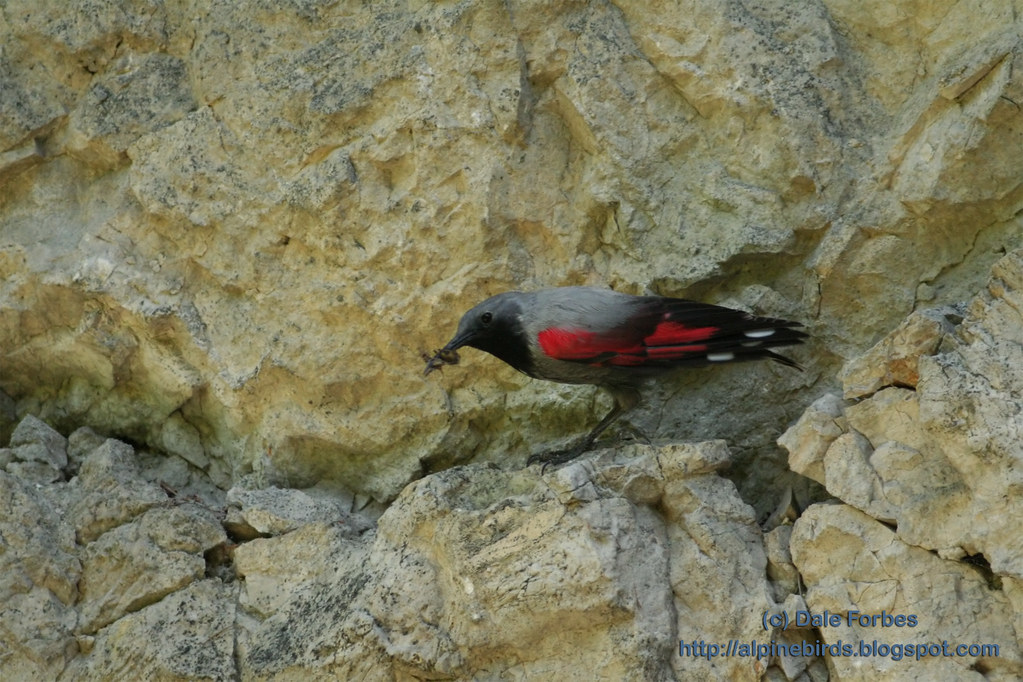
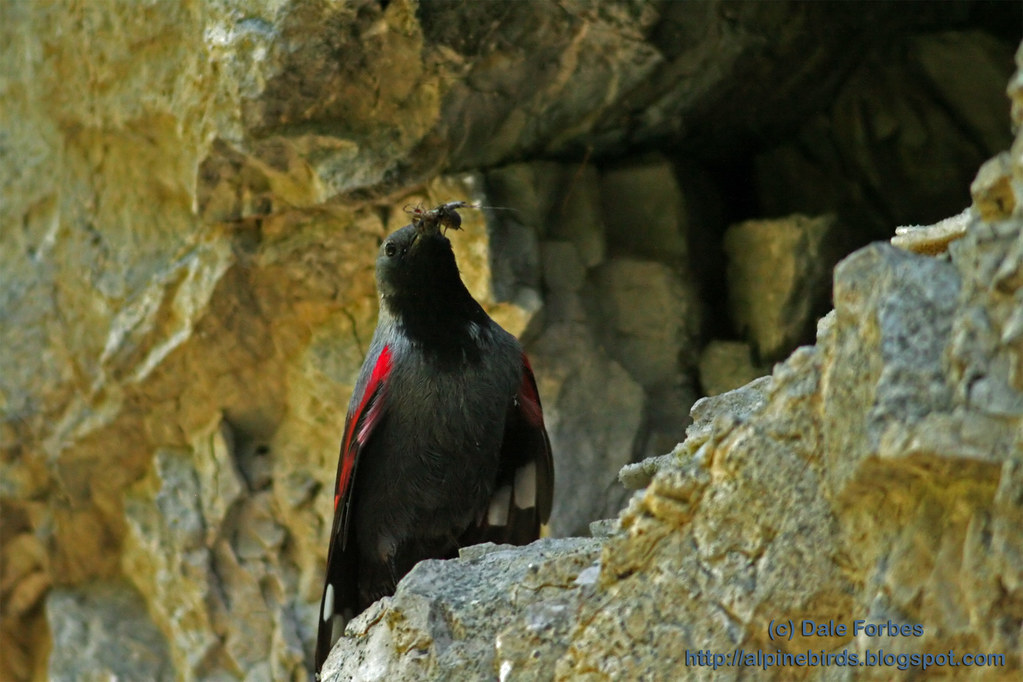

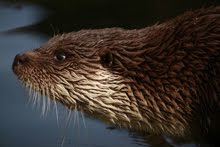






.jpg)








.jpg)




9 comments:
Well, it seems you are not telling the entire truth there, Dale?
There is no such species as a Wallcreeper. It is a fabrication to make others envious. This bird does not exist outside of nice picture books.
How else can you explain that I have never seen one?
See? That proves it!
Cheers, and putting the non-existence of the species aside: awesome pics, man, awesome!!!
Wow, not only a beautiful bird but also so industrious a builder. Imagine shaping the rock with a bill.
That was a lot of gear to carry but certainly worth it for the great images. Hope you didn't have to carry the student too.
Fabulous observations and post. Dale - I get to know something new most of the times I come to your blog. Thanks for sharing this...Thomas
That was sure worth the time and effort Dale. These remind me very much of our red-winged starlings.
Dale, fantastic bird. Don't listen to Jochen. He needs to get off the plain. He is too interested in Acrocephalus and pipits. Jochen, climb a mountain!
I did a few retweets of your blogpost yesterday, Dale. I would if I were you reuse one of your previous imigases from June 8 that also shows the wing and include it in the posting. Insert it and I`ll do another retweet.
I am building up strategy for my hosting of "I and a bird" later in July. I hope to be able to launch a little this link sharing love on other social media platforms such as #birdsaturday on twitter.
Thanks again for a great post.
BTW. You may want to correct the feed of my blog in your sidebar. I finally figured out how to use feedburner - but the RSS link changed.
http://feeds2.feedburner.com/ABirdingBlogByGunnarEngblom
Gunnar
you are quite correct Jochen, there is no such thing as a wallcreeper. it is all a result of the over-active imaginations of very bored photoshop users and people who spend way too much time foraging for fungal food in cow poop.
Gaelyn, she was not that heavy ;-)
Thomas, thank you for the support. I do put a lot of effort in to having fun with birds and animals and then sharing that passion! It is nice that it is appreciated.
Joan, it is less of a redwinged starling and more of a grey sunbird (about the same size and overall shape) with scarlet and white wings. I always loved grey sunbirds so this way a real treat to find.
Hi Gunnar, haven't seen you about these ways for a while. Thanks for the retweets! I have that video of the wallcreepers at the nest all up and ready to go. In the video you can really see what they are like - the male hopping about flicking his wings. I'll post it tomorrow probably.
I will be down in south africa or mozambique at the time of your I and the Bird, but send me an email coming up for it and I will definitely contribute something that fits your theme from down there. I'll correct your feed asap.
Wow I missed this one and I should have not. Great post and great pictures. i think I'll go to disgiscopy too one day!!! Gorgeous shots dale!
I had no idea that birds were capable of building such nests! Fascinating!
Great photos, I love that bright red wing on the male. I'm sure it makes it easy to identify.
Post a Comment